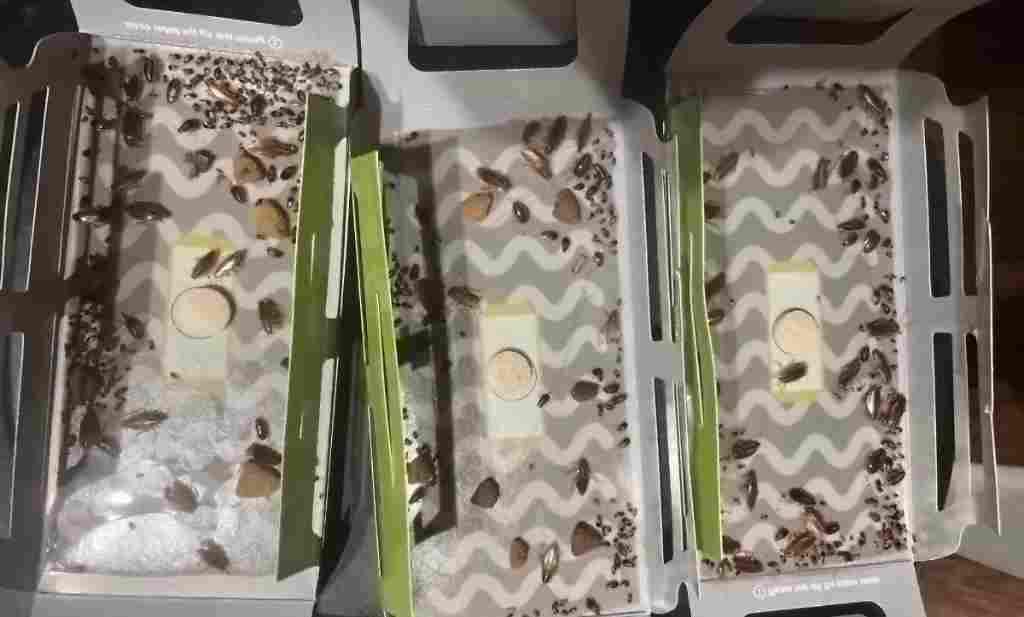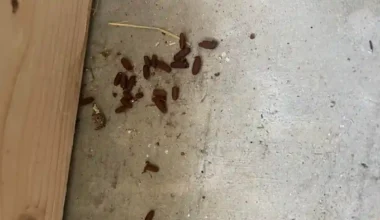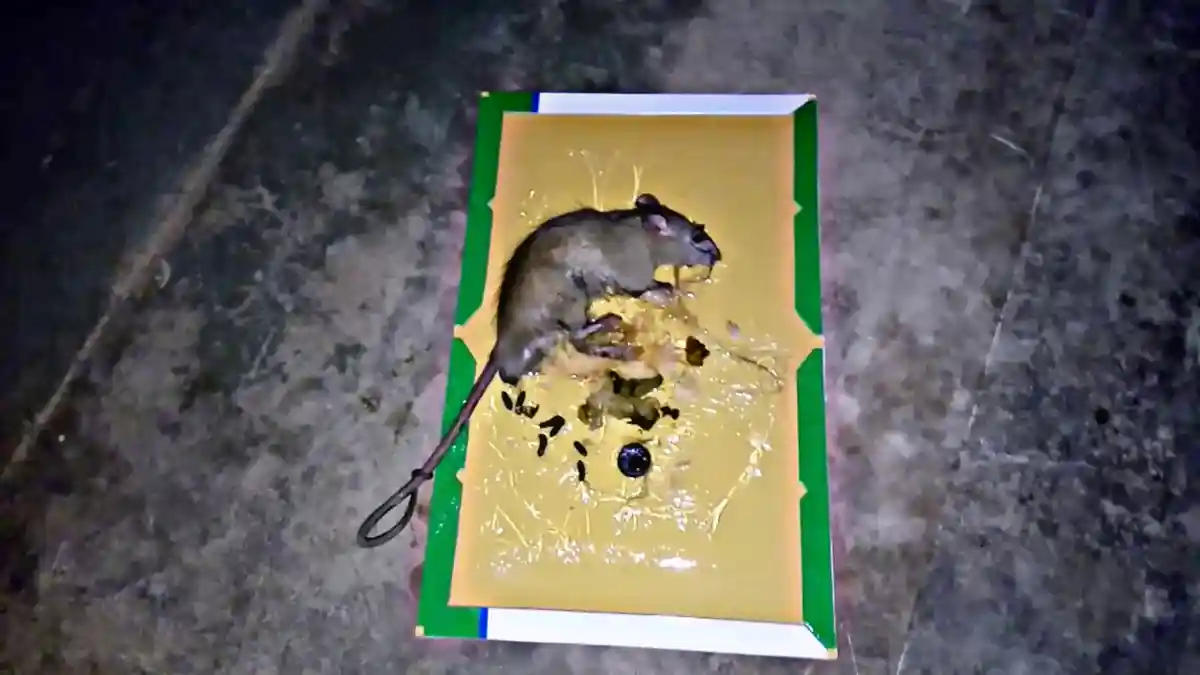In most cases, you can tell if roach bait is working when there is a notable reduction in adult cockroaches within 7 days.
Cockroach presence in your home is quite unpleasant, especially the German cockroaches famous for multiplying so rapidly. On the other hand, dealing with a cockroach problem can be very daunting, fortunately, using cockroach bait is just one of the efficient ways to eradicate them.
Roach bait will normally eliminate the entire roach population. However, you want to be certain that the roaches are indeed gone. Even after the confirmation, you must keep up the preventive work to stop them from returning.

How do roach baits work?
Roach baits are food laced with insecticide, typically different attractants that attract different roach species. Roach baits include gels, powder, and bait stations. Gels often work the fastest, but they dry up easily, however, other forms of treatments fight insects for a longer time. Usually, a combination of treatments produces the best result.
Common cockroach behaviors are modeled in the lure for baits to work. Roaches eat almost anything, including dead roaches and their droppings. Thus, they also are attracted to and will eat your bait. If the bait contains a delayed toxicant, roaches will then return to their hideout with the toxin.
In their hideout, they will discharge urine and excrement contaminated with the toxin, which other roaches will ingest. The other cockroaches in the nest may also eat the dead roaches, thus, eating the poison as well.
That said, how long does it take for roach bait to work? It may take 6 hours to 4 days long for baits to kill roaches, depending on the pesticide used.
How to tell if roach bait is working
Perhaps, the roaches are gone. You don’t also want to stop your proofing measures so they don’t return. Look out for the following signs to tell if your bait is working and roaches are going:
1. Reduction in adult roaches
In about 7 days after treatment, most homeowners will observe a decrease in adult cockroaches which is typically a strong indication your roach bait is working.
Immediately after the baiting, monitor the roach activity and sighting frequency. If you notice a gradual decrease in the number of roaches, your roach baiting is working. For cockroaches to survive long enough to return to their nesting place and spread the toxic bait to other cockroaches, make sure you are using gel baits with toxins that react slowly.
In general, exercise patience and give the bait some time to be effective.
2. Frequenting bait replacement
Another sign to tell if roach bait is working is if the roaches are eating the bait and you see the need to add more or replace them in 7 to 14 days or a smaller cluster of days. That said, how long does roach bait last? How long the roach bait lasts will depend on the properties it is made of. Manufacturers typically provide expiration dates for the baits when opened and when not opened, so check with the manufacturer.
Just be patient and give it time. Since the roaches have taken the bait, then it’s acting already. Also, switch out baits as necessary.
Within a short time, you should see a decrease in live roaches or perhaps see dead cockroaches eliminated by the bait.
Although tempting, do not immediately dispose of the dead roaches unless you find the bodies in open spaces. Live cockroaches will eat the dead ones, which transfers the bait toxins to them.
To address the German cockroach’s reproductive cycle and the high rate of reproduction, consider combining baits with an insect growth regulator. Gel bait does not target hatching roach eggs or a growing population—they solely target adult roaches.
3. Scurrying live roaches
If you are seeing more roaches after bait on floors, walls, and countertops, it’s a sign that your bait is working, disorganizing, and drawing them out of the shelter. No need to step on the cockroaches.
Roaches try to avoid the daytime and are most active at night. So, if you see one during the day, it suggests that the bait is working against the infestation, which has probably been ongoing for a long time. In some cases, you may need the services of professionals to contain severe infestations.
4. Signature roach smell
The signature smell emitted by live roaches is oily, musty (as described by Yahoo!), and even sweet. Roaches can communicate with each other using that unpleasant odor, helping them locate food, safe hideouts, and breeding opportunities.
If a cockroach crawls on a plate, piece of glass, or other items, you will undoubtedly perceive it—it’s an odor we all hate.
This smell suggests that the roaches are being dislocated from their nests around your home. Give it a bit of time for the bait to do its job. If the recommended number of days in the product description is exceeded without an end to the smell, contact the manufacturer or your local exterminator.
5. Increasing roach droppings
Everywhere they go, cockroaches leave behind brown or black droppings. Depending on the species of roach you are dealing with, the excrement can be as small as a pepper speck, as large as coffee grinds, or as small as oval pellets.
A significant roach infestation will likely feature a lot of the droppings. Moreover, the location of the roach shelters can be determined where there is an unusually high concentration of droppings in that particular area. An increasing number of roach droppings suggest that the pests are eating your baits. Roaches have unique eating habits, so they eat anything and digest that in their gut with the help of bacteria (or gut microbes). As such, they are more likely to rapidly produce droppings on their way, having eaten the baits.
While your bait becomes their source of food, it is best to eliminate other non-toxic sources of food or water to stop further infestation. Do this by covering your pet’s food (roaches, for example, are attracted to dog food), getting rid of food crumbs in the bed, storing food in airtight containers, sealing pipes and drain holes, and sealing bathroom cracks.
6. Eggs and cases
Roaches breed aggressively. If you detect an oblong, brown casing like a coffee bean, get rid of it. You might assume that since you only saw one egg case, there is no call for concern. The truth is that there are several roach eggs in this tiny, bean-like casing called ootheca.
The ootheca or egg capsule in a German roach ootheca, for example, is 3 mm wide, 8 mm long, and segmented. Each segment of the ootheca contains 2 eggs and each ootheca usually has 30 to 40 eggs! This data is obtained from the study The German Cockroach by P.G. Koehler and J. L. Castner.
Thus, if you have one ootheca, expect an infestation in 1-2 months, depending on the roach specie you are dealing with.
Note: if you notice roach parts like wings, heads, and legs scattered around, it could be that you have mice or rats eating them—of course, rodents eat cockroaches, typically as their last food resort or if there are many roaches around their own nest.
Where to place roach bait
If you suspect a delay in the effectiveness of your roach bait, you probably placed them in the wrong areas. Below are effective areas to place the baits:
- Behind and under appliances (fridge, dishwasher, toaster, microwave, water dispensers, ovens, and coffee makers).
- Around counter tops in cracks and crevices.
- Inside your drawers and cupboards along the edges and crevices.
- Under the sink where the plumbing penetrates the wall.
How long does cockroach bait take to work?
Baits allow the roaches to survive long enough to carry the poison back to their hideouts and distribute it in the nest where other roaches will also ingest it. However, baits do not work as fast as sprays that eliminate after direct contact.
The species and extent of the infestation have a significant impact on how long it will take to get rid of roaches with baits. You should take note of quick progress within a week, and after roughly a month, you should be quite close to getting rid of the critters completely.
Seeing more roaches after bait
When you bait cockroaches, their activity may occasionally seem to increase—that’s okay, and should only be the case for some time as you’ve disturbed their hideout.
The increase in roaches will also occur when you have removed their food supply. In combination with good IPM (Integrated Pest Management) like cleaning up, caulking cracks and crevices, etc., you have disrupted their environment, forcing them aggressively out in search of food or wobbling to their death.
Nevertheless, think about the baseline and determine the following:
- the number of roaches you were seeing before now
- the number you are seeing after a few days of treatment
- how many you have seen after 2 weeks of treatment
You could always check the baited areas to see if the baits have been eaten. If you still find the baits there in the amount you left, you may be baiting the wrong places and need to bait again, this time in the best places to eliminate roaches. If you don’t find the baits, they’ve been eaten by the roaches. Expect dead roaches in 24 hours or a few days.
That said, do roaches learn to avoid bait? Roaches can avoid baits. Moreover, insects do evolve resistance to pesticides, gaining the ability to break down poisons without dying.
How to properly bait roaches
The location of roach baits is important. That said, baits are more effective if closer to the cockroach nests or hideouts.
Check your house for roach evidence. You might also notice molted roach skins and roach excrement like ground black pepper, in addition, to live or dead roaches. The following are some typical places to look for roaches:
- behind appliances
- under sinks
- in cabinets and drawers
- near your washer and dryer
- inside closets and
- underwater heaters
Roaches love dark, moist, secluded areas. Put a little pea-sized dab of gel close to the roach nest once you’ve found it. You can also use roach tablets or powder in hard-to-reach areas.
After 2 weeks, change the bait to keep them fresh and attractive. Smaller amounts of bait spread out over more areas typically produce greater results.
Keeping the roaches away
Having baited and confirmed that roaches are gone, you want to keep them out.
Identify their hideouts
The first step is identifying where the critters hid formerly. That way, it’s easier to stop them from returning. Since the roaches are gone, look for their evidence (empty egg capsules, wings, droppings, etc.) around the sink, shelves, fridge, closets, crevices, and cabinets.
Repel the critters
You can repel the cockroaches naturally using the strong scents they hate. Roaches generally have a good sense of smell, so leverage this to keep them at bay.
An example is a citrus, which can also repel roaches in car interiors. Although the fresh citrus scent is nice to humans, it’s not the same with roaches—they dislike it. You could even place citrus peels to repel them.
Roaches also dislike eucalyptus and lavender, so plant these in your yard or garden to help roach-proof your home. Other repellents are tea tree oil, cayenne, garlic, and onion powder—these will discourage cockroaches from your home. If you have bay leaves, here is how to repel cockroaches using bay leaves.
Seal possible entries
Fix the gaps to prevent further entry. Use caulk or sealant to seal gaps and crevices cockroaches use to enter your property.
Your last resort
If you believe that the roach bait is not working, hire a local professional to help you end the infestation. Pest control technicians have the right tools and can efficiently remove and stop cockroaches from returning.






